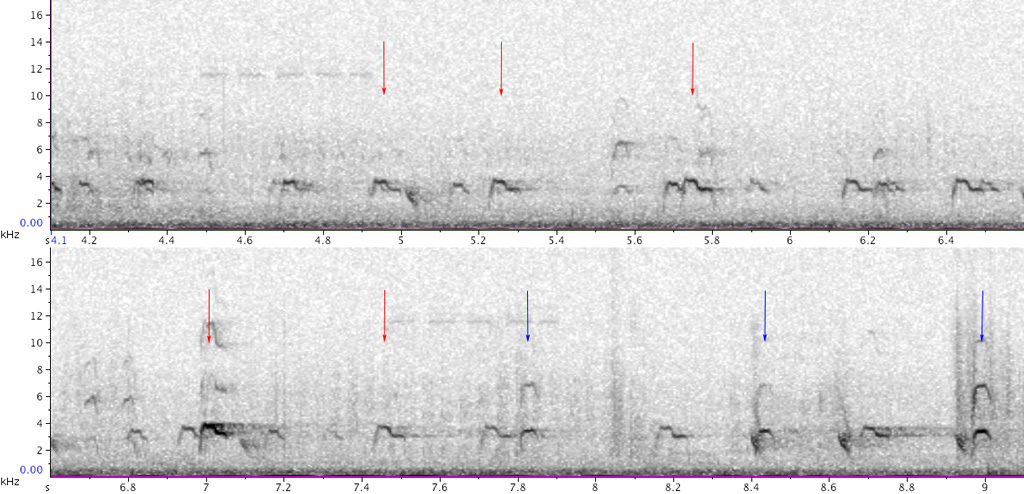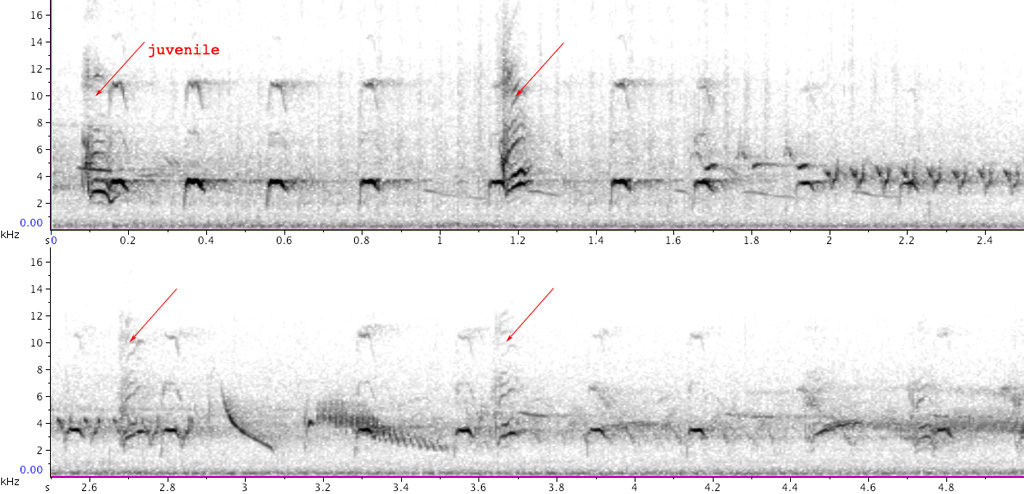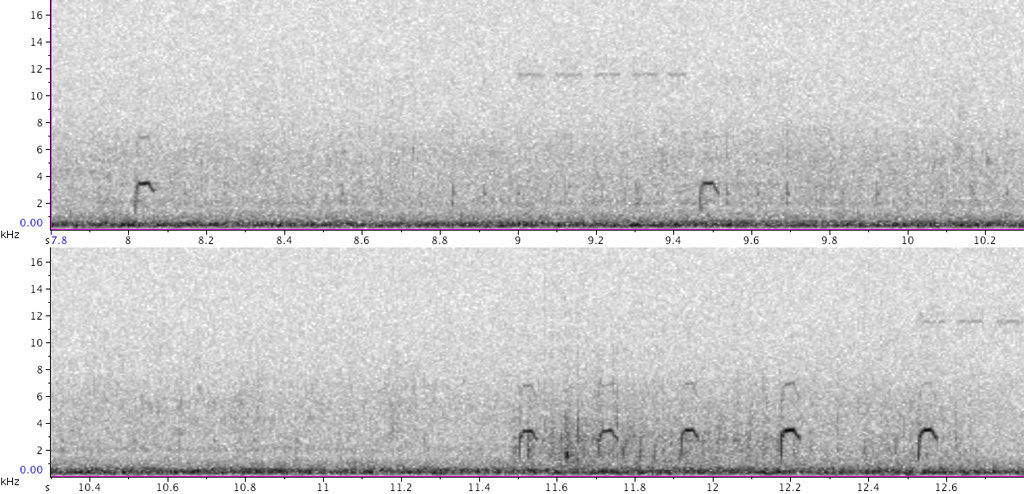>> GENERAL >>>>>
– medium-sized passerine, slightly larger than Red Crossbill
– diurnal migrant
– migrates singly or in small to medium loose flocks
>> VISUAL ID >>>>>
not yet photographed
>> ACOUSTIC ID >>>>>
– as in Red Crossbill, ecomorphs with different measurements and ‘call types’ excist
– JUV flight calls show obvious plasticity, but just for a short period of time
– AD flight calls show obvious plasticity too, mostly during the breeding period
– calls learned from parents or other conspecifics near nest

Parrot Crossbill Loxia pytyopsittacus, flight call, excitement call
BIF2263, 05/02/2018, Südheide, Germany, Patrick Franke
– probably two different ‘call types’

Parrot Crossbill Loxia pytyopsittacus, JUV, begging call; AD F M, flight call
BIF2264, 27/04/2018, Südheide, Germany, Patrick Franke

Parrot Crossbill Loxia pytyopsittacus, 2CY M, flight call, 300m distance
BIF2265, 09/02/2018, Südheide, Germany, Patrick Franke
>> COMPARISON SPECIES >>>>>
Red Crossbill (v) (a)
Two-barred Crossbill (v) (a)
Scottish Crossbill (v) (a)
Common Redpoll (a)
Pine Grosbeak (v)
Hawfinch (v)
#songbird #passerine #finch
#ornithology #birdmigration #birdID #birdguide #birding #birdwatching #birdsound #westernpalearctic #europe #vismig #flightcalls #middleeast #northernafrica #workinprogress
Reference:
Robb M. S. 2000, Introduction to vocalizations of crossbills in north-western Europe, in Dutch Birding 22, Santpoort-Zuid